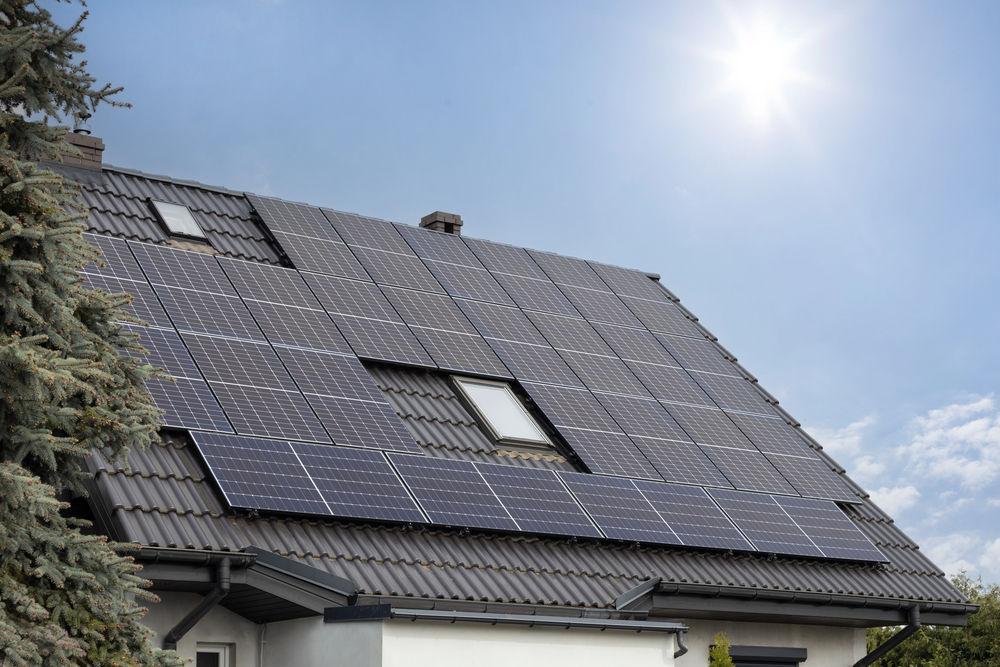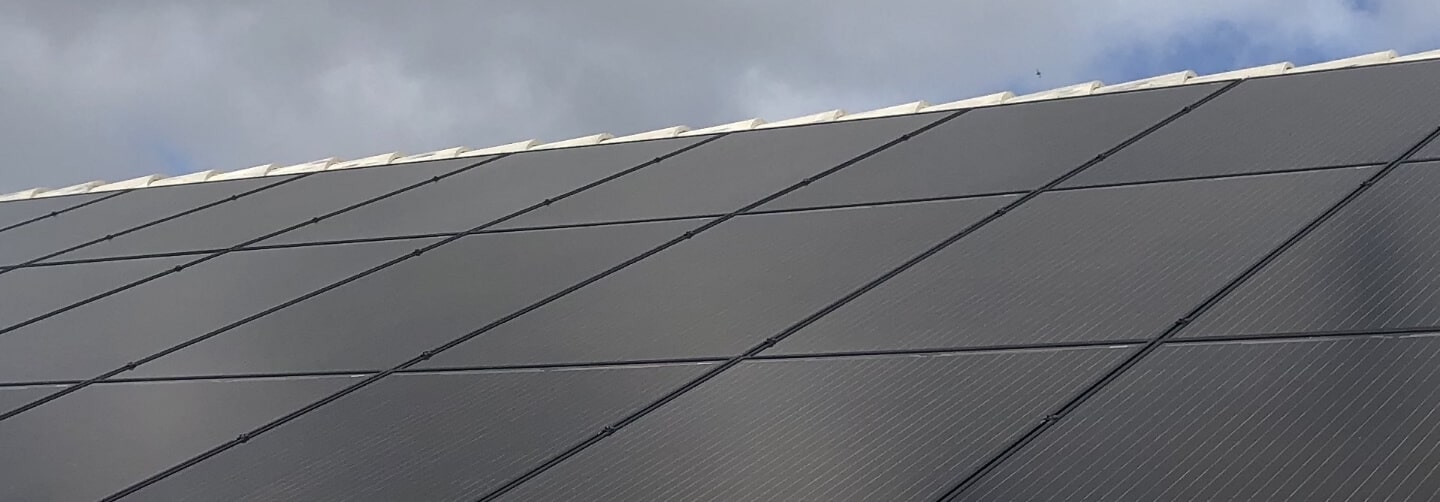How Many Solar Panels Are Needed To Power A House?

Wondering how many solar panels to power a house? This question is central to those looking to invest in solar energy. The number of solar panels needed depends on various factors, including your home’s energy consumption, the efficiency of the panels, and the amount of sunlight your home receives. Let us explore how to calculate the number of solar panels required to meet your energy needs, making it easier for you to decide on the best solar solution for your home.
What Affects the Number of Solar Panels Needed?
The number of solar panels required to power your house is not a fixed number. It varies based on several factors, and understanding them can help you calculate the precise number of panels you will need. Let us look at these key elements:
- Your Home’s Energy Consumption
To figure out how many solar panels you need, the first step is to understand how much electricity your home consumes. This is usually measured in kilowatt-hours (kWh), and your energy bill gives this information.
On average, U.S. homes use about 877 kWh per month. However, this can vary widely depending on factors like the size of the house, the number of occupants, and how much energy is used for heating, cooling, and appliances.
To calculate how much electricity you use per day, divide your monthly kWh by 30. For example, if you use 900 kWh per month, your daily consumption would be:
900 ÷ 30 = 30 kWh per day
Knowing your daily energy consumption helps you understand how much power your solar panels need to generate each day.
- The Amount of Sunlight Your Home Gets
The amount of sunlight your home gets plays a major role in how many solar panels are needed to power a house. If you live in a region that gets plenty of sunshine year-round, your solar panels will be more effective, and you may need fewer panels.
For example, areas like Southwest Florida benefit from abundant sunshine, making solar energy an excellent choice. On average, homes in sunny areas can expect solar panels to generate more energy per day compared to homes in cloudy regions. The more sunlight you get, the fewer panels you will need to meet your daily energy needs.
Sunlight is measured in peak sun hours, which refers to the amount of full sunlight your panels receive during the day. On average, most locations in the U.S. get between 4-6 hours of full sunlight per day. This is a key factor in calculating the number of solar panels needed.
- Solar Panel Efficiency
Not all solar panels are created equal. The efficiency of the solar panels you choose determines how much energy each panel can generate. Higher efficiency panels produce more electricity in less space, meaning you will need fewer of them.
Monocrystalline solar panels are known for being the most efficient, converting more sunlight into electricity. These panels tend to cost more but are ideal if you are looking to maximize your energy production while minimizing roof space usage. If your roof space is limited, investing in high-efficiency panels is often the best choice.
Polycrystalline panels are less efficient than monocrystalline panels but are more affordable. If you have more roof space, you may opt for polycrystalline panels without sacrificing too much energy output.
- Roof Space Available for Installation
The number of solar panels needed to power your house also depends on how much roof space you have for installation. Each solar panel is typically around 3-4 feet long and 5-6 feet wide. If you have a large roof, you will have more flexibility in terms of the number of panels you can install.
However, if you have limited roof space, you may need to choose higher-efficiency panels, such as monocrystalline panels, to meet your energy needs. Alternatively, you may explore solar carports or ground-mounted systems, which can be installed if your roof space is inadequate.
It is important to keep in mind that your roof’s angle and orientation also influence how much energy your panels can generate. South-facing roofs generally receive the most sunlight in the Northern Hemisphere, and a slight tilt can improve energy production.
Calculating the Number of Panels You Need
Now that you understand the factors that affect the number of solar panels needed, it is time to calculate how many you need to meet your home’s energy needs. Here is a simplified method to make this calculation easier:
- Determine Your Daily Energy Usage:
Look at your electricity bill and divide your monthly usage by 30 to get your daily energy needs.
Example:
900 kWh/month ÷ 30 = 30 kWh/day. - Solar Panel Output:
On average, a standard solar panel (300 watts) produces about 1.2 kWh per day, assuming 4-5 hours of good sunlight. - Calculate the Number of Panels:
Divide your daily energy usage by the energy output of a single solar panel.
Example:
30 kWh/day ÷ 1.2 kWh/panel = 25 panels.
So, in this example, you would need approximately 25 solar panels to meet your daily energy needs.
Considering Additional Energy Needs
In addition to powering your home, you might want to account for extra energy needs, such as heating your pool or cooling your attic. Many homeowners install solar pool heaters and solar attic fans to further reduce their energy consumption and increase efficiency.
A solar pool heater uses the sun’s energy to heat your pool, reducing the need for electric or gas-powered pool heaters. Similarly, solar attic fans help regulate your home’s temperature by improving ventilation and lowering the load on your air conditioning system. These energy-saving solutions can be integrated into your solar system to further reduce your electricity bills.
When installing these systems, it is important to account for the additional energy required to power them. If you are planning to install a solar pool heater or attic fan, consider including them in your overall energy calculations.
The Role of Solar Battery Storage
For homeowners who want to maximize the potential of their solar systems, adding solar battery storage can be an excellent option. Solar batteries store excess energy produced during the day so that you can use it during cloudy days or at night when your solar panels are not generating electricity.
This is particularly useful for homes that want to be fully energy independent or for those in areas with unreliable grids. Battery storage adds a bit more to the initial cost but can pay off eventually by ensuring you always have power available, even when the sun is not shining.
The Importance of Professional Installation
Proper installation is key to ensuring your solar panels perform at their best. Poor installation can result in reduced efficiency, which means you will not be generating as much energy as you could. That is why it is important to work with a professional solar installation company.
At Solar Energy Solutions of America, we offer expert residential photovoltaic solar electric installation, ensuring your solar panels are optimized for maximum energy production. We handle everything from design and installation to system monitoring and maintenance, ensuring your system continues to perform efficiently over the long term.
Understanding Local Incentives and Rebates
Another important factor to consider when determining how many solar panels you need is the availability of incentives and rebates in your area. Many states and local governments offer incentives to reduce the upfront cost of installing solar panels. This can significantly lower the overall cost of your solar system.
Federal tax credits, such as the Investment Tax Credit (ITC), allow you to deduct a percentage of your installation costs from your federal taxes. Additionally, certain utilities may offer rebates or net metering programs that pay you for excess power generated by your system. By understanding these financial incentives, you can better estimate the return on investment for your solar panels, and it could also impact the number of panels you decide to install.
Maintaining Your Solar Panels for Maximum Efficiency
Once your solar panels are installed, it is important to maintain them to make sure they continue producing energy efficiently. Regular maintenance helps prevent potential issues and prolongs the life of your system.
Keeping your panels clean is one of the simplest ways to maintain their efficiency. Dust, dirt, and debris can reduce the amount of sunlight the panels absorb, decreasing their power output. In most cases, it is best to clean the panels twice a year, but the frequency may vary based on environmental conditions.
Additionally, checking the wiring, inverters, and overall system performance annually makes sure everything is functioning optimally. If you live in an area prone to storms, it is also a good idea to have your system inspected after severe weather.
Determining how many solar panels are needed to power a house depends on various factors such as energy consumption, sunlight, panel efficiency, and roof space. By understanding these elements and following the simple calculation steps, you can get a clearer picture of how many panels are required for your home.
At Solar Energy Solutions of America, we are committed to helping homeowners make the transition to solar energy. With our residential photovoltaic solar electric systems, solar pool heaters, and solar attic fans, we offer comprehensive solutions to meet your energy needs and help you save on electricity costs.
If you are ready to take the next step, contact us today to learn more about how solar energy can work for your home.
